'Sea snot' blooms off Turkish coast
Interview with
We recently recognised “World Ocean Day” which, according to the initiative’s mission statement, is all about raising awareness of what’s happening to the marine realm and rallying to restore and protect our blue planet. So the appearance in the sea south of Istanbul, Turkey, of huge floating rafts of thick, viscid, sticky material that’s being dubbed “sea snot”, which is made by explosively growing blooms of algae and suffocates other sea life, is a perfectly timed wake-up call. Charlotte Birkmanis waded into this problem with David Kline, from the Smithsonian Tropical Research Institute...
Charlotte - Whether you're in the Northern Hemisphere and the sun is shining, or you're here in the Southern Hemisphere, and.... well, it's a little more chilly, you decide to start planning your next summer holiday for when we're advised to travel once more. So you first find and blow the dust off the old atlas to glance at the world map. Then you remember it's the 21st Century and you can actually look at photos online! You go to the search engine and start browsing. You want a sight of the exotic while you're away - some baklava with your sun baking perhaps - so Turkey it is. But instead of photos of glorious beaches and happy holidaymakers, you see something very different staring back at you. A thick jelly-like carpet of aptly named 'sea snot' is spreading off the coastline of Turkey's Sea of Marmara. Dense mats of the slimy substance blankets the dark blue waters. Up close it's even less appealing: creamy gelatinous goo. Stinky, too. Now with your holiday plans in disarray, let's find out what's going on.
David - So it's not climate change per se. It's more poor pollution and water management.
Charlotte - That's David Kline from the Smithsonian Tropical Research Institute. The inland sea's record breaking marine bloom stretches from Istanbul, Europe's most populated city, to the tourist hotspot of the Aegean. The thick slimy substance is not only an eyesore, but it can also devastate human health, as well as the environment and the economy of the region.
David - And they basically cause dead zones where no animals are living because the oxygen levels get too low.
Charlotte - The heavily industrialised shoreline of one of the planet's smallest seas is also a source of pollution. Agricultural runoff and ineffective waste disposal, coupled with increasing temperatures in calm waters, have led to high nutrient levels of nitrogen and phosphorus. This is the perfect environment for phytoplankton - tiny floating sea plants or microscopic algae that create oxygen in the oceans. Normally that's a good thing, but with these excess levels of nutrients they grow very quickly, and that's called a plankton bloom. And that also leads to these marine snot outbreaks, which are basically huge rafts of marine microorganisms.
David - These phytoplankton that make the blooms can produce toxins that can make us sick - types of phytoplankton that you don't really want.
Charlotte - These blooms can also harbour bacteria and other toxic microorganisms that are harmful to human health. Now this algae and bacteria is using up all the oxygen, and that causes everything else that needs this oxygen, like fish, crabs, and even corals, to suffocate and die. These animals then rot, and sometimes sink, releasing mucus, causing more bacteria to grow, using more of the oxygen, and so the cycle continues. Yuck! This can quickly create these 'dead zones', damaging not only the ecosystem, but also the economy of the fisheries and others who are dependent on the ocean for their livelihoods - and tourism. And with the looming threat of climate change with increasing ocean temperatures, this could get worse, as everything could be accelerated and amplified. Algae can breed faster; the blooms will increase in size using the available oxygen even more quickly.
David - So climate change and global warming will just make this whole phenomenon even worse.
Charlotte - And this isn't just impacting Turkey.
David -Many other examples around the world, basically anywhere where you have a lot of farming, a lot of fertiliser use. It's happening in many places all around the world.
Charlotte - Cleaning it up is not only messy, but it's also expensive. However, there is something we can do. As well as continuing to develop better ways to manage our waste, and treat our water, and deal with the agricultural runoff before it reaches the ocean, there's some creative solutions floating around.
David - There are groups that are growing algae that local communities can sell. They grow them in rivers that feed into the ocean, and basically act as a natural sponge for the nutrients, while at the same time growing algae that the local communities can sell for fertiliser or for biofuels.
Charlotte - There's also hope for the current outbreak.
David - It's not too late. There's lots of cases showing that if we do something to manage the nutrients... that the ecosystems can usually bounce back.
Charlotte - And the silver lining in all this is that you can see the effects of reducing the nutrients in the water in a matter of weeks to months. Perhaps your Turkish holiday is just on hold for now.
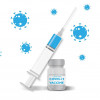
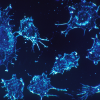
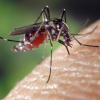
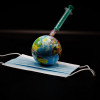



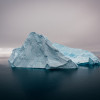
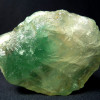
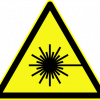
Comments
Add a comment